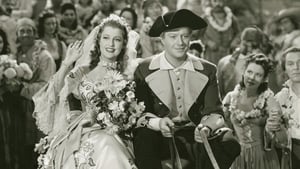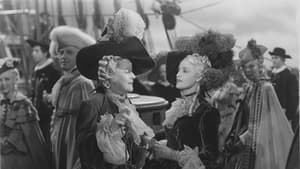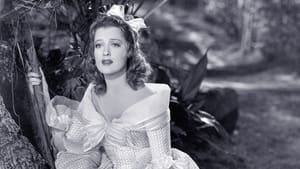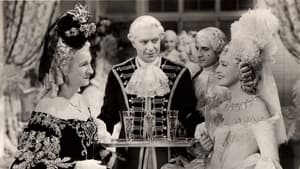Video Sources 0 Views
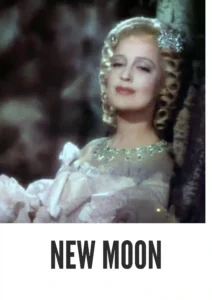
Synopsis
Adventure, Romance, and Revolution: New Moon (1940) in Dazzling Color

Step back in time with New Moon, a sweeping romantic drama from 1940, now beautifully colorized for a viewing experience that brings old Hollywood to life. Starring Pat O’Brien and Tyrone Power, this film combines adventure, romance, and historical drama into an unforgettable cinematic journey. Also known as His Majesty’s New Moon, this HD download is perfect for fans of classic musicals and historical romances.
New Moon Storyline: Love and Revolution in Old New Orleans
New Moon tells the story of Charles, Duc de Villiers (played by Tyrone Power), who is wrongly accused of treason and exiled to New Orleans. On the ship, he meets and falls in love with Marianne de Nonant (played by Jeanette MacDonald), a spirited aristocrat traveling to marry a wealthy landowner.Upon arriving in New Orleans, Charles becomes involved in a rebellion against the corrupt colonial government. As he fights for justice and freedom, his love for Marianne deepens. However, their romance is complicated by political intrigue and personal conflicts. The film culminates in a dramatic showdown, where Charles must choose between his love for Marianne and his commitment to the revolutionary cause. Ultimately, New Moon is a captivating tale of love, courage, and sacrifice set against the backdrop of colonial Louisiana.
Movie Cast
The film features a stellar cast of actors who bring this epic story to life:
- Jeanette MacDonald as Marianne de Nonant
- Nelson Eddy as Charles, Duc de Villiers
- George Zucco as Vicomte Ribaud
- Mary Nash as Aunt Monique
- Dick Purcell as Alexander
Movie Genre
New Moon falls into the genre of romantic drama, with significant elements of musical and historical adventure. Its blend of romance, action, and memorable musical numbers makes it a classic of the Golden Age of Hollywood.
Historical Context: The Golden Age of Hollywood Musicals
Released in 1940, New Moon exemplifies the grandeur and spectacle of Hollywood musicals during the Golden Age. The film was produced during a time when studios had the resources to create lavish sets, costumes, and musical arrangements, offering audiences an escape from the realities of the time. New Moon is celebrated for its memorable songs, grand production values, and the charismatic performances of its lead actors, Jeanette MacDonald and Nelson Eddy.
Colorization Details
This colorized version of New Moon has been meticulously restored using modern digital techniques, enhancing the visual appeal while preserving the film’s original charm and grandeur. The colorization process involved carefully analyzing the grayscale tones of the original black and white footage and assigning appropriate colors to each scene. This painstaking process brings new life to the characters and settings, making the story even more engaging for modern audiences. While opinions on colorizing classic films may vary, it introduces these films to a broader audience, ensuring their legacy for future generations.
Technical Details
- Director: Robert Z. Leonard, W. S. Van Dyke
- Screenplay: Jacques Deval, Robert Arthur, Phyllis McGinley, Oscar Hammerstein II, Sigmund Romberg, Frank Mandel, Laurence Schwab
- Based on: the play “New Moon” by Oscar Hammerstein II, Sigmund Romberg, Frank Mandel, and Laurence Schwab
- Cinematography: William Daniels
- Edited by: Robert J. Kern
- Production Company: Metro-Goldwyn-Mayer
- Distributed by: Metro-Goldwyn-Mayer
- Runtime: 105 minutes
Technical Specifications
- Download Format: MP4
- Resolution: HD (1080p)
- Compatibility: Compatible with most devices, including smartphones, tablets, computers, and smart TVs.
Reviews and Critical Reception
New Moon (1940) is celebrated for its memorable songs, grand production values, and the charismatic performances of its lead actors. As a classic of the Golden Age of Hollywood musicals, New Moon offers a delightful escape into a world of romance, adventure, and beautiful music.
FAQs
- Q: What is New Moon about?
- A: New Moon is a romantic drama about a wrongly accused nobleman who finds love and becomes involved in a rebellion in New Orleans.
- Q: Is this version of New Moon colorized?
- A: Yes, this version has been professionally colorized to enhance the viewing experience.
- Q: What makes New Moon a classic?
- A: New Moon is celebrated for its memorable songs, grand production values, and the charismatic performances of its lead actors, Jeanette MacDonald and Nelson Eddy.
- Q: What is the download format?
- A: The download format is MP4, which is compatible with most devices.
- Q: What resolution is the download?
- A: The resolution is HD (1080p), providing a high-quality viewing experience.
Download Now in HD!
Watch New Moon Today!
